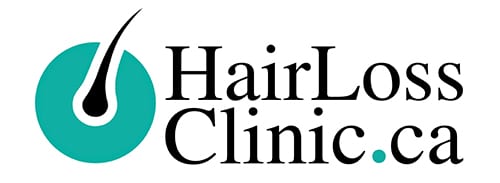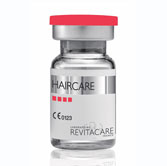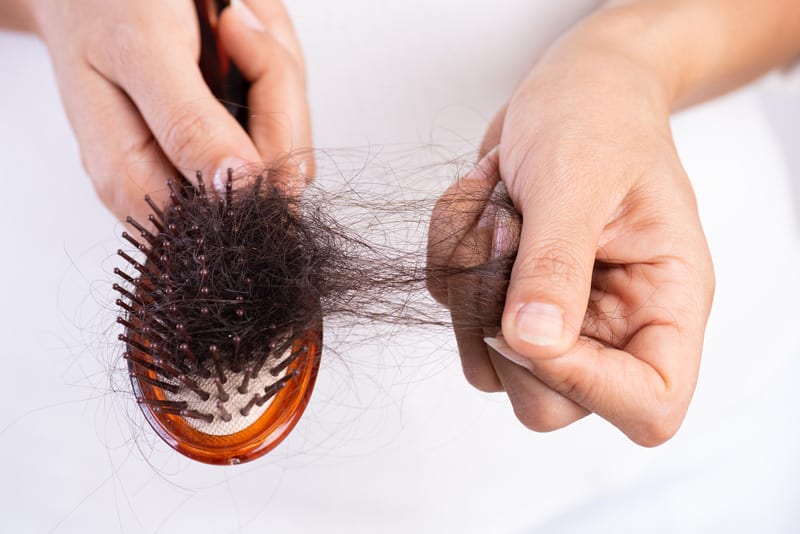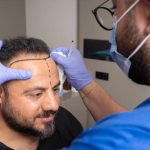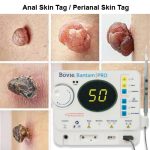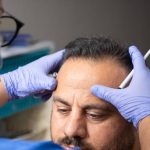Table of Contents
Hair Loss in Women and Womens Hair Loss Treatment
INTRODUCTION
There are many reasons for hair loss in women. The average scalp contains approximately 100,000 hairs. On a typical day, women can lose around 50 to 100 hairs. But if more hairs are shed each day, thinning hair becomes more and more noticeable. Fortunately, women’s hair loss treatments are available for most female hair loss problems. Some hair loss in women is only temporary, and the hair will normally grow back on it’s own once the issue has been resolved. Other hair loss conditions, such as female pattern baldness, may require treatment to help maintain and stimulate hair growth.
WOMENS HAIR LOSS: FEMALE PATTERN HAIR LOSS / FEMALE PATTERN HAIR BALDNESS
Female pattern hair loss, also known as FPHL, female pattern baldness, or female pattern alopecia, is a type of androgenetic alopecia or hair loss in women. Androgenetic alopecia is a genetic condition that affects both men and women. For hair loss in women, the pattern of hair loss differs from that of men. Male hair loss pattern looks like a horseshoe, with the frontal hairline receding into the back of the scalp. For most men, the side and back of the hair remain intact. For female pattern hair loss, the pattern is different. Women experience diffused hair loss all over the scalp, starting from the top of the scalp and progressively thinning throughout the entire scalp region. Androgenetic alopecia causes miniaturization of the hair. Over time, these hairs look so small that you think they are gone. For men, the miniaturization affects all hairs in the horseshoe pattern. For women, though, the miniaturization doesn’t affect all the hair. So even though hair thinning is apparent, most women still maintain their frontal hair line, unlike male pattern hair loss.
Androgenetic hair loss is caused by hormones in both men and women. For men and women, dihydrotestosterone or DHT is the specific hormone that causes hair loss. This is a hormone that your body produces as a byproduct of testosterone. For women, besides hereditary, an imbalance of hormones caused by ovarian cysts, pregnancy, high androgen index birth control pills, and menopause can also cause androgenetic hair loss.
To determine women’s hair loss treatment, it is important to have a Trichologist determine the nature of your hair loss.
A proper assessment is needed to determine that the hair loss is not due to another issue besides female pattern hair loss. Women can lose their hair in many other ways besides FPHL.
OTHER HAIR LOSS IN WOMEN THAT RESEMBLES FEMALE PATTERN HAIR LOSS
Hair loss in women resembles FPHL with diffused hair loss all over the scalp but it is another hair loss condition.
EFFLUVIUM ALOPECIA
Effluvium Alopecia is a temporary condition that can affect hair loss in women. Effluvium alopecia looks very similar to female pattern hair loss in that they both have hair thinning throughout the scalp. Your hair grows in cycles. When your body goes through something traumatic, it can change the growth cycles of the hair. About 90% of your hairs are in the anagen phase (growth phase) or transitional phase (catagen), but any trauma to your body could cause it all to shift to the resting phase (telogen).
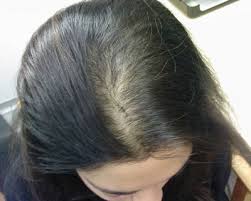
Effluvium alopecia can be triggered by many traumatic things to your body, such as a poor diet (lacking certain vitamins or minerals), sudden weight loss due to dieting, surgery, certain drugs, extreme stress, metal toxicity, pregnancy, menopause, and other underlying health conditions. So, it is important for a Trichologist to ask you questions about these issues to determine what other things could contribute to your hair loss. Effluvium is a temporary hair loss condition, and once the underlying issue is resolved, your hair should start growing back in three to six months.
ANAGEN EFFLUVIUM
Anagen effluvium is also a temporary hair loss condition caused by the cellular-level mitotic or metabolic activities impairment of the hair follicles. The most common cause of anagen effluvium is chemotherapy or radiation therapy. Right after chemotherapy, approximately 90% or more of hairs in the anagen phase can fall out. Like Effluvium alopecia, the condition usually reverses once the underlying issue is resolved.
TRACTION ALOPECIA
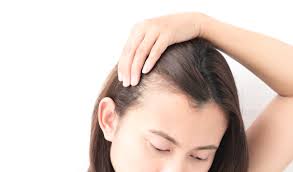
Traction alopecia hair loss is due to trauma to the actual hair follicles. This can be caused by many hairdressing issues, such as over-processing of your hair from chemicals, dyeing, bleaching, over-brushing, and using a hot hair dryer regularly. Poor hair styling habits also contribute to trauma to the hair follicles. This can include wearing your hair in a tight ponytail, braiding, and adding hair extensions. Your hair should start growing back once you stop and correct your hairdressing issues.
TRICHOTILLOMANIA

Trichotillomania is a hair-pulling disorder that causes hair loss, mainly in younger girls. Hair pulling can occur in any region of the body, but the primary affected area is the scalp. Trichotillomania may be difficult to assess as many people with this disorder deny that they are doing it. The urge to pull hair is a mental disorder, and the best treatment is cognitive behavioural therapy. Once the behaviour stops, the hair should grow back. (hairlossclinic.ca has a device that can help to change the person hair pulling behaviour, please get in touch with us for more information about trichotillomania)
ALOPECIA AREATA
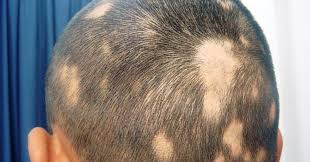
Alopecia areata is one type of hair loss that doesn’t resemble the typical diffused pattern seen in other forms of female hair loss. With alopecia areata, bald patches of your scalp are visible where the hairs have fallen out. The size of the hair loss usually looks like a small coin size, round patches, but in more severe cases, it can affect the whole scalp and body. It is an auto-immune disorder that can affect men and women at any age. Hair loss that causes total hair loss to the scalp is called alopecia totalis. Total hair loss to your whole body is called alopecia universalis. The most common form of alopecia areata treatment is corticosteroids, anti-inflammatory drugs that can suppress the immune system. These are commonly administered through local injections, topical ointment application, or orally.
Once the Trichologist has assessed your hair condition and determined it’s female pattern hair loss and not effluvium alopecia or some other hair loss condition, the hair specialist can recommend the correct treatment.
RECOMMENDED WOMEN’S HAIR LOSS TREATMENT

AAPE® is a stem cell technology that promotes hair follicles regeneration and prompt restoration. AAPE® is a mixture of refined growth factors extracted from human adipose-derived stem cells conditioned media. It induces the proliferation of dermal papilla cells of human hair follicles to increase total hair count and make hair regrow twice faster. AAPE® has:
- US FDA, CFDA Approval
- PCPC US registration
- 15 International SCI journals
- 28 Patents registration worldwide
The use of AAPE®, “fat” or adipose-derived stem cells conditioned media has been used successfully in treating female hair loss. The non-invasive treatment is described in the following journal article, including a new study and scientific analysis of hair growth measurements and results photos published in the International Journal of Dermatology. This advanced stem cell-derived protein extract called AAPE can now be applied in a clinical setting without discomfort or downtime as a lunch-hour session at the Toronto and Richmond Hill Trichology Centre | Hair Loss Clinic.
PHARMA HERMETIC HAIR RECOVERY PROGRAM®

Pharma Hermetic Hair Recovery Program® works at revitalizing the hair bulb and obtains greater thickness and strength. It helps strengthen the anchorage of the root and rebalance the scalp.
In addition, the Hair Recovery Program® SP55, enhances the growth of new hair and activates dormant follicles thanks to its effective active ingredients. Providing all the necessary nutrients to repair weakened and brittle hair. After the treatment, the hair becomes thicker and more voluminous.
We rely on ingredients suitable to penetrate the scalp and stop hair loss.
- Thicker hair.
- More density.
- No side effect.
- Topical application.
- Lasting results.
NOURKRIN® WOMAN, FOR WOMEN’S HAIR LOSS TREATMENT

If you’re worried about certain hair loss medications that contain ingredients that may cause some side effects, such as Minoxidil, we offer a hair loss treatment called Nourkrin®. Nourkrin® contains natural ingredients and has been clinically proven to help thin hair. The key active ingredients are marine-based extracts of proteins and polysaccharides combined with silica, vitamin C, and horsetail extract. Developed by scientists in Finland, Nourkrin® has been the subject of many double-blind, placebo-controlled clinical studies, the latest of which showed that 77% of all participants reported a positive effect during a six-month treatment period, and their hair count increased by an average of 35.7%. Nourkrin® Woman with the unique Marilex® helps support, normalize and maintain the Hair Growth Cycle by carefully providing the correct nutrients to the hair follicles. Nourkrin® is the only product worldwide containing Marilex® (which has a unique and protected composition structure), and consumers should therefore beware of imitation products that claim to deliver similar effects with so-called ‘marine proteins’ or ‘marine extracts’ – as these are not the original, scientifically tested Marilex®. Today, the award-winning Nourkrin® Woman is appreciated by women around the world. Nourkrin® Woman is completely safe and 100% drug-free. You can get the Nourkrin® Woman hair loss treatment at the Toronto and Richmond Hill Trichology Centre | Hair Loss Clinic.
THERADOME® LASER HAIR THERAPY FOR WOMEN’S HAIR LOSS TREATMENT

The Theradome® brings you the world’s most advanced laser hair growth treatment from the comfort of your home. Unlike Light Emitting Diode (LED) devices, our laser light targets the stem cells at the base of hair follicles. This allows the formation of a new photonic pathway that can restore hair to a healthy state. Theradome® one-of-a-kind laser hair helmet was engineered based on four crucial scientific criteria, providing the most powerful and efficacious laser hair growth treatment.
Only lasers produce coherent light, meaning their waves are aligned and travelling in synchronicity. Laser light is needed to penetrate the scalp at a depth of 3 – 5 mm and reach the base of a hair follicle. No other light source (i.e., LEDs) can achieve this. Our proprietary cold laser hair growth treatment ensures the mitochondria of hair cells are stimulated by treating the base of hair follicles. The mitochondria then produce cell energy that is harnessed by hair follicles. You can purchase the Theradome® hair loss laser therapy device at the Toronto and Richmond Hill Trichology Centre | Hair Loss Clinic.
SMP® SCALP MICROPIGMENTATION FOR WOMENS HAIR LOSS TREATMENT
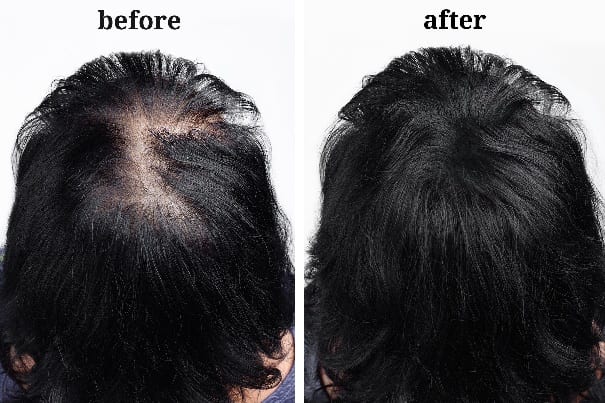
If you suffer from scarring alopecia (no hair growth in the bald areas) or want to have thicker-looking hair, another option is SMP® scalp micropigmentation. It is a technique in which pigment is deposited into the dermal layer of the skin on the scalp replicating the look of hair follicles. When viewed from close, the pigment dots appear like real hair follicles. With female hair loss, SMP® can be done in between the existing hair follicles to add thickness and reduce areas where more scalp is showing. SMP® works best for women with dark brown or black hair.
Q & A
What are some common causes of hair loss in women?
Various factors, including hormonal imbalances, genetic predisposition, medical conditions, lifestyle choices, and external factors, can cause hair loss in women. Hair loss can be triggered by hormonal imbalances, including during pregnancy, menopause, or thyroid disorders, causing disruptions in the hair growth cycle. Genetic predisposition, known as female pattern hair loss (FPHL), can cause gradual hair thinning over time. Medical conditions like alopecia areata, autoimmune disorders, scalp infections, and certain medications can also contribute to hair loss. Lifestyle choices, such as excessive styling, harsh chemical treatments, and poor nutrition, can weaken the hair follicles and result in hair loss. External factors like stress, trauma, and physical damage to the scalp can also play a role in hair loss.
How many hairs does the average scalp contain?
On average, the human scalp contains approximately 100,000 hairs. However, it’s important to note that this number can vary from person to person.
How many hairs do women typically lose daily?
It is normal for women to lose around 50 to 100 hairs per day. This daily hair shedding is part of the natural hair growth cycle and usually goes unnoticed. If the amount of hair loss exceeds this range or there are noticeable thinning areas, it may indicate an underlying hair loss condition.
Are there temporary hair loss conditions that can resolve on their own?
Yes, temporary hair loss conditions can resolve once the underlying cause is addressed. Conditions like effluvium alopecia, triggered by a poor diet, sudden weight loss, surgery, medications, or extreme stress, often result in temporary hair loss. Once the underlying issue is resolved, hair growth typically resumes within three to six months.
What is female pattern hair loss?
Female pattern hair loss (FPHL), also known as female pattern baldness or female pattern alopecia, is a common type of hair loss in women. It is characterized by gradually thinning the hair, primarily on the top and front of the scalp. Unlike male pattern baldness, FPHL does not typically cause complete baldness but leads to a noticeable reduction in hair density. Genetic factors and hormonal changes, specifically the hormone dihydrotestosterone (DHT), are thought to play a role in its development.
How does female pattern hair loss differ from male pattern hair loss?
Female pattern hair loss differs from male hair loss in pattern and progression. In male pattern hair loss, the hairline typically recedes and forms a distinct “M” shape, while the hair on the crown and top of the scalp thins gradually. In contrast, female pattern hair loss results in a more diffuse hair thinning across the scalp. Women may experience a widening part, thinning at the crown, or overall hair thinning without a distinct pattern. Additionally, female pattern hair loss rarely leads to complete baldness, as it preserves the frontal hairline.
What hormone is responsible for hair loss in both men and women?
Hair loss in both men and women is attributed to the hormone dihydrotestosterone (DHT). DHT is derived from the hormone testosterone through an enzymatic process. It has a greater impact on hair follicles that are genetically sensitive to its effects. The binding of DHT to receptors in the hair follicles leads to their shrinkage and the production of thinner, shorter hair strands. Over time, the affected follicles may become incapable of producing visible hair, leading to hair thinning and eventual loss.
Can hormonal imbalances contribute to hair loss in women?
Yes, hormonal imbalances can contribute to hair loss in women. Fluctuations in hormone levels, such as those experienced during pregnancy, postpartum period, perimenopause, and menopause, can disrupt the normal hair growth cycle. These hormonal changes can lead to a condition known as telogen effluvium, where many hair follicles enter the resting phase and subsequently shed. This can result in significant hair thinning or shedding.
In addition to natural hormonal variations, certain medical conditions like polycystic ovary syndrome (PCOS) can disrupt the hormonal equilibrium in women, leading to hair loss. PCOS is marked by heightened levels of androgens (male hormones) in the body, which can adversely affect hair follicles and lead to hair thinning or loss.
CONCLUSION
To summarize, womens hair loss can stem from hormonal imbalances, genetics, medical conditions, lifestyle choices, and external elements. Female pattern hair loss (FPHL) is a prevalent form of hair loss in women, characterized by progressive hair thinning throughout the scalp. Hormones, particularly dihydrotestosterone (DHT), play a significant role in hair loss among both men and women. Hormonal imbalances during pregnancy, menopause, or conditions like polycystic ovary syndrome (PCOS) can contribute to hair loss in women. Seeking guidance from a trichologist is vital for identifying the fundamental reason behind hair loss and receiving appropriate treatment suggestions. Options such as PRP, AAPE, laser light therapy, scalp micropigmentation, and tailored hair loss programs can effectively address hair loss in women and stimulate regrowth.
Comments are closed.
